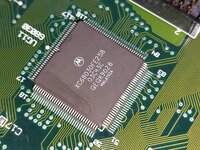ObeyDaleks
Well-known member
Hi. Does anybody know if the 16Mhz MicroMac MultiSpeed accelerator can be upgraded to a faster version?
Looks like they came in 16, 25, and 32Mhz versions.
Does anybody know if it would be just a straight crystal/CPU swap? Or is there more to it than that? I assume the 25Mhz version is just an overclock, and the 32Mhz is a faster CPU and crystal?
Looks like they came in 16, 25, and 32Mhz versions.
Does anybody know if it would be just a straight crystal/CPU swap? Or is there more to it than that? I assume the 25Mhz version is just an overclock, and the 32Mhz is a faster CPU and crystal?


